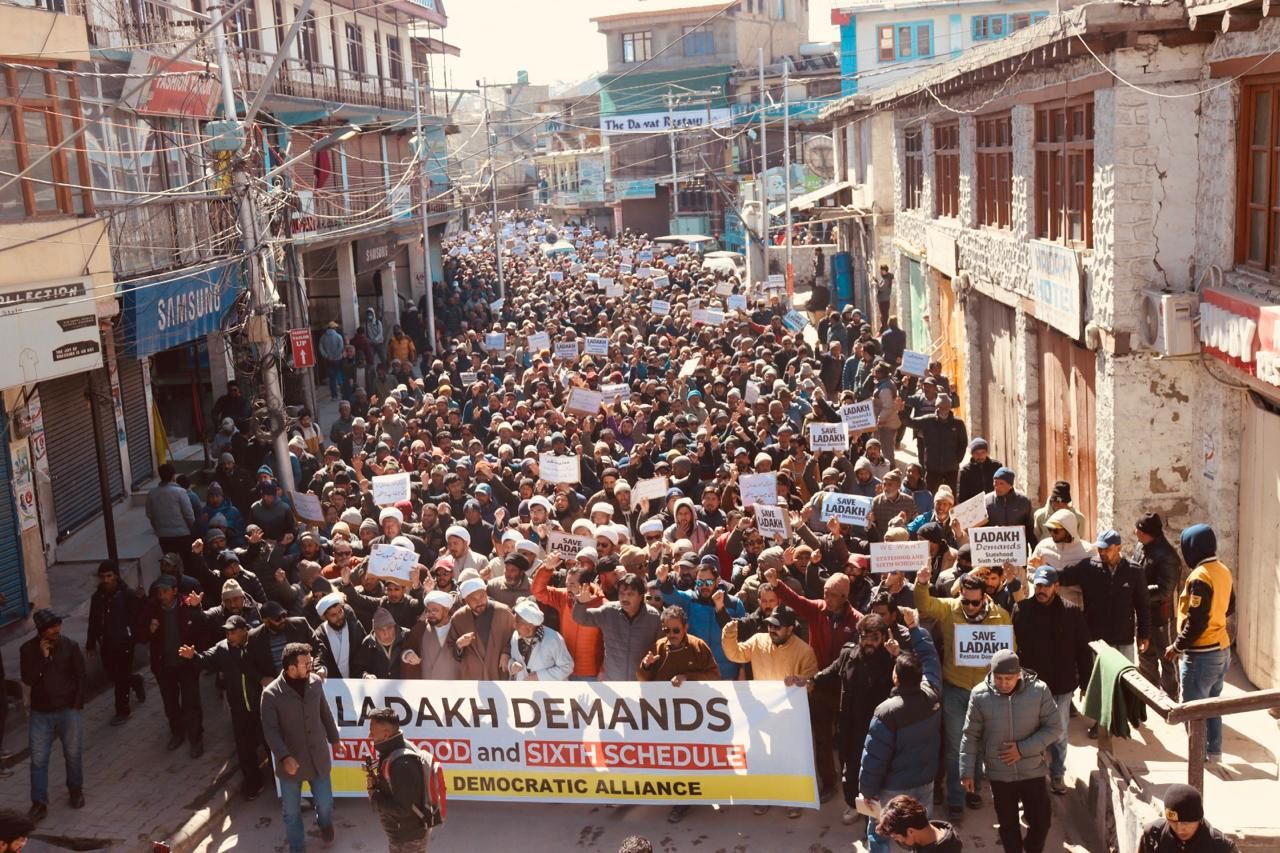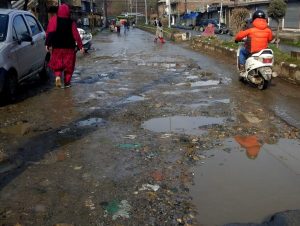
Sailing Through Challenges: BJP’s Journey in Ladakh’s Political Seas
Residents want guarantees that they will have full rights on jobs and land and no industry or development work that threatens the fragile ecosystem of the high-altitude region will be allowed.
In August 2016, several Buddhist and Muslim organisations in Ladakh, then a part of the state of Jammu and Kashmir, set aside differences to push for the status of Union Territory for the region bordering China. The unrest and violence that erupted in the Kashmir Valley triggered the escalation of the long-pending demand, following the killing of Hizbul Mujahideen operative Burhan Wani.
Worried that the unrest would spread to Ladakh, affect its economy that rests largely on tourism, local leaders led by the then representative in Parliament, Thupstan Chhewang, urged the Union government for trifurcation of the state and denote Ladakh as a UT.
In Delhi, during closed-door meetings with government officials, the leaders confided that that the people of the region were apprehensive about their security in the wake of fresh violence and amid chatter of resurgence of insurgency in the state. They also nudged the BJP to set a date for the abrogation of Article 370, which was a prerequisite for granting UT status to Ladakh, hinting that its alliance with the PDP, with which it ran a coalition government in J&K, had sent out a message that political compulsions had pushed the BJP ideological commitment of abrogating Article 370 to the back burner.
Three years later, in August 2019, there were celebrations and revelry in Ladakh. With the Parliament giving its nod to Jammu and Kashmir Reorganisation Bill that bifurcated the state into two UTs, Ladakhis were finally granted their wish. They were no longer tethered to Jammu and Kashmir. They would not have an assembly, but their political identity would no longer be hyphenated with J&K.
For the ruling BJP, this was just the endorsement it wanted. In 2014, it won the lone Lok Sabha seat from Ladakh with the slimmest of margins that year (36 votes) and in 2019 it was feted for fulfilling a long-pending promise of abrogation of Article 370. The party’s candidate Jamyang Namgyal won the seat in 2019 with a margin of 10,000 votes and the party was buoyant with the strides it made in the region.
The celebrations did not last long.
Clashes between the Indian Army and Chinese forces in the Galwan Valley of Ladakh in June 2020 cast a shadow and raised concerns. Amid fears of intrusion by the Chinese army into Ladakh, the government’s attention was also drawn to the incipient demands for restoring the statehood in the region.
In June 2021, local leaders in Ladakh began to push for an elected legislature. An apex body, which had representatives from political, social and religious organisations, asserted their demand for safeguarding land, jobs, environment, culture and language that existed prior to the formation of the UT be spelt out.
The Union government’s assurance and deputing minister of state for home Nityanand Rai to hold discussions did not break the ice with leaders who have since been pushing for the implementation of Schedule VI in the region.
Residents want guarantees that they will have full rights on jobs and land and no industry or development work that threatens the fragile ecosystem of the high-altitude region will be allowed. At present, Ladakh has two autonomous district councils that have the mandate to decide on issues such as economic development, healthcare, education, land use, taxation, and local governance, but the people now want provisions of the Sixth Schedule, under Article 244 which allow autonomous development councils to frame laws on land, public health, and agriculture to protect the tribal population and provide autonomy.
Multiple protests have been held in Ladakh and outside, demanding the implementation of Schedule VI. They also dismiss the government’s explanation that Ladakh does not qualify for a separate assembly because a state needs at least 60 seats. There are examples of smaller states such as Goa, Mizoram, Puducherry have less than 60 seats, but separate assemblies.
The government for its part says apart from monies sanctioned for development works and employment opportunities, land allotment prioritises locals over non domiciles; for jobs too, bona fide certificate of residence of Ladakh is a must. In an interview to HT in November, Ladakh Lieutenant Governor Brigadier BD Mishra (Retd) said “not one square inch of land has been given to anybody, not a single job has been given to any outsider, nor has any outsider been promoted for any business in Ladakh”.
As elections to the only Lok Sabha constituency draw close, there is a section of people on the ground that are unhappy with the BJP for not engaging with voices that have raised alarm over the threat to ecology.
The absence of any communication or outreach from the government when well-known figure from the region, Sonam Wangchuk, went on a 21-day hunger strike demanding implementation of Schedule VI, has not gone unnoticed. Wangchuk called off the strike and also a “pashmina march” to the Changthang pasturelands that was scheduled for Sunday, after the government imposed Section 144, prohibiting the assembly of four or more.
As murmurs of BJP showing indifference to the demands grow, a party leader admitted there are “gaps in communication”. What remains to be seen now is how the party will make last-ditch efforts to placate the dissenting voices, after all it has a target to win 370 seats and retain the lone seat in Ladakh. Source

